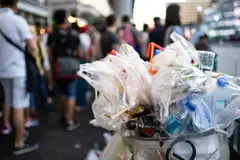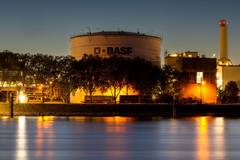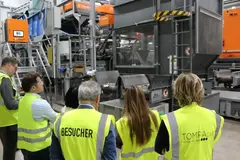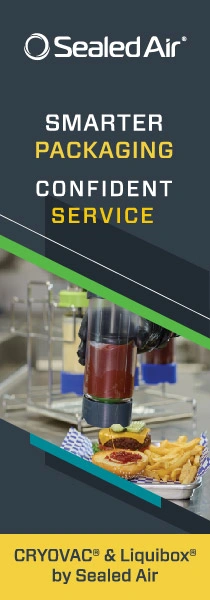Tomra presents sorting tech at Nextloopp event to boost food-grade PP recycling
Key takeaways
- Tomra Recycling hosted Nextloopp participants in Germany, showcasing its sorting systems that support food-grade rPP.
- Led by Nextek, Nextloopp has gained FDA approval for rPP in food-grade applications, marking a step toward PP circularity in the EU, UK, and US.
- Tomra called for standardized, consistent product designs to align packaging, sorting technology, and end-market requirements.
Tomra Recycling invited participants of the Nextloopp initiative to its headquarters in Mülheim-Kärlich, Germany. Tomra offered participants a close-up look at the sorting systems and packaging designs which support material recovery and recyclability.
Led by independent consultancy Nextek, Nextloopp is an initiative for the production of food-grade recycled PP (rPP) from post-consumer packaging. It invites players across the plastics value chain to develop scalable, safe, and circular recycling solutions that meet food-contact standards in the EU, UK, and US.
Edward Kosior, founder and CEO at Nextek and the Nextloopp initiative, says: “Nextloopp has received US Food and Drug Administration (FDA) approval for the use of recycled PP in food-grade applications. That’s a milestone, it highlights how we’re moving from ambition to reality in making PP circularity achievable.”
Deep learning solution
Tomra has contributed its expertise and technology to Nextloopp to support achieving full circularity for plastics. During the visit, participants observed live trials showcasing the capabilities of Tomra’s sorting systems. Using its sorting allrounder Autosort, PP bales were separated into white and natural fractions.
The company also presented GainNext, which is said to have the ability to distinguish food-grade from non-food-grade PP.
According to the company, GainNext utilizes neural networks and object recognition to classify materials, allowing sorting by shape, size, dimensions, and other visual characteristics. When combined with traditional sorting systems, which sort by material type and color, it achieves “the highest sorting granularity currently available.”
Ralph Uepping, Tomra Recycling’s senior vice president and head of technology, shares: “While we continue to believe that near infrared and visible systems will remain the core of every sorting plant because of their stable high performance and minimal retraining necessity, we see huge potential in our deep learning solution GainNext.”
“It unlocks more, new, and demanding applications. By combining the reliability of traditional systems with the adaptability and advanced pattern recognition capabilities of GainNext, we can significantly improve sorting efficiency and accuracy.”
Design for improved circularity
The Nextloopp event also served as an educational platform. The company brought together stakeholders for strategic discussions on advancing Design for Recycling.
The event also introduced how packaging choices directly influence the performance of sorting systems and discovered how thoughtful design can support a more effective recycling process.
Johannes Jacoby, head of market strategy at Tomra Recycling, says: “Tomra advocates a holistic approach, where standardized product design — through consistent colors, shapes, and surface characteristics — helps avoid frequent changes in packaging design and empowers sorting systems to perform with greater consistency.”
“Only when packaging design, sorting technology, and end-market requirements are aligned can we unlock real progress in circularity. Recycling isn’t just about using the right technology — it’s about ensuring that the input material is consistent and recognizable.”











